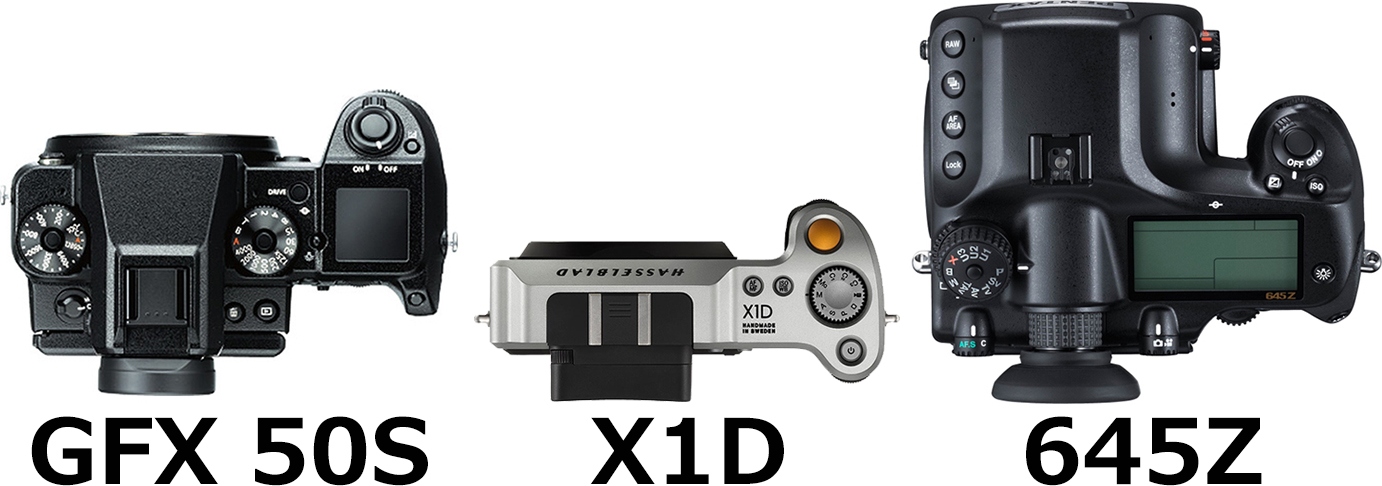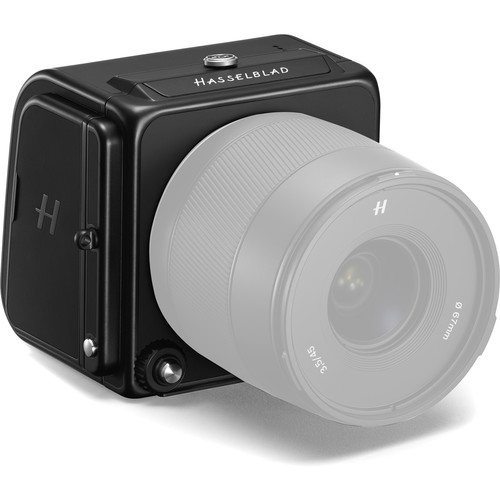I remember how much I was amazed by the quality of the first image I've made with my first medium format sensor (Leaf Aptus 7). The sharpness, the skin tone, the look and feel of the image was so much "better" than anything I have seen before. Prior to switching to Aptus I have been shooting with Nikon D1, D2 and other D# systems for more than 15 years. The difference between the 35mm digital and the medium format was mind blowing to me. Then I switched from Aptus to Phase One. But switching from one medium format digital back to another simply changed the "style" or a "character" of the images. The "medium format quality" or "a look" was there regardless of the back.
Now, with these new sensors that are priced at sub $10K level... would they be capable to deliver or support the same difference in quality that has been existing between 35mm digital and a medium format? Would you see the difference in the image quality between the Nikon D5 and Hasselblad 907X or Fuji GFX? Or may be these sub $5K priced sensors is a new category of sensors on its own, a medium-of-medium-format that simply sits between 35mm digital and the existing medium format represented today by the digital backs that are priced at $20K, $30K or $40K? What if these sensors are the equivalent of Lecia D-Lux series that was designed to be affordable Leica even without the ability to deliver the Leica's image quality?
The question is: Is this a new more efficient technology that replaces the obsolete one or is it the old saying you get what you paid for?
As others have noted, this sensor is *not* a "new sensor". It is the very *same* 6 year-old sensor that is in the H5d-50c, H6d-50c, and the 50MP CMOS backs from Leaf and Phase, as well as the Pentax 645z, Hasselblad X1d (I *and* II), and the 50MP GFX and GFR cameras from Fuji. As others have also pointed out, there's more here than just the sensor.
So, let's compare this to what you're using *now*: a P65+ mounted on an RZ67.
The sensor technology is *different* here: the P65+ is a CCD (charge-coupled device) sensor, and the current 50MP, 100MP, and 150MP sensors are all CMOS-based.
Many people feel that the color rendition from CCD sensors is more pleasing than CMOS sensors, however I think these differences have largely been eradicated over the years. Phase and Hasselblad have both put a huge amount of effort into getting the color from CMOS sensors to match the results from their older backs through the supporting circuitry and firmware in their backs. Overall, they've both done an excellent job. However, this is a judgement call - you should look at files from these cameras and compare them.
The CMOS sensors offer better dynamic range (14-16 stops) than CCD. This makes it easier to handle high-contrast subjects and to recover shadow detail. They offer better performance with less noise at high ISO. They offer better long-exposure performance. None of those features may matter to the way you shoot.
As others have noted, you're not just buying a sensor here: you're buying a camera *system*. Bodies, lenses, etc., etc.
On lenses: thanks in part to the plummeting cost of computation, modern medium format lenses are simply superb. You basically can't go wrong here. This site is full of real-world test results you can look at. The 907x uses the same lens mount and lenses as the X1D, and all the native X lenses are fantastic. I haven't used the Fuji system, but their results are comparable, judging from test results. Because these are all mirrorless systems with very short flange-to-sensor distances, it is easy to adapt lenses from other cameras to them. Because of differences in the camera bodies, however, you may have less functionality with adapted lenses (except Hasselblad H-series lenses) on the X1D/907x than you would on the Fuji.
On bodies: The Hasselblad X1D cameras are smaller and lighter than the corresponding Fuji bodies. They're actually not a lot bigger than a Leica M-series range finder (and they're actually thinner than Leica M). The actual *body* of the 907x is even smaller, since it's just an interface between the back and the lens mount, but of course it does have that CFV50c-ii hanging off the back of it. You won't be able to put a 907x+CFV in your jacket pocket, but you can do that with an X1D.
One of the major reasons the Fuji bodies are larger is that they have a fully-functional focal-plane shutter in the body. Like Hasselblad H-series SLRs, neither the X1D nor the 907x have this - they mostly depend on leaf shutters in the lenses. Leaf shutters are generally quieter and produce much less vibration than focal plane shutters, however they do entail the added cost of including a shutter with each and every lens. They also permit full flash sync up to their maximum speed (1/2000 sec on the X1D), but that may not matter to you. The lack of a focal plane shutter also means that you'll have less flexibility when using adapted third-party lenses on the X1D and the 907x. You *can* use such lenses, but you'll be stuck relying on the electronic shutter in the sensor itself - which can be very limiting (0.3 second scan time pretty much restricts you to static subjects and usually a tripod and you generally can't use flash). The Fuji, on the other hand, retains full shutter capability with such lenses. This may or may not matter to you. The Fuji is a bit more modular than the X1D, as well.
Here's a front view of the Fuji, Hasselblad, and Pentax 50MP bodies so you can compare width and height:
And here's the view from the top so you can see the relative thickness:
I can't find a side-by-side image of an x1d and an RZ-67 ;-)
I don't really think it's possible to make a mistake here - we're living in the Golden Age of medium format digital. A lot of this stuff comes down to personal taste.





